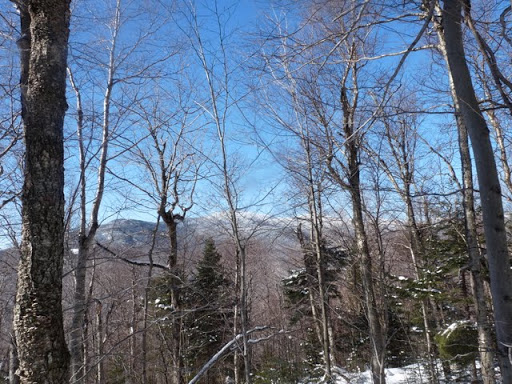That is an excellent photo comparison, Billy, for the multiple polarizing effects they illustrate.
One other curious effect in your photos is that the mass of Mount Washington appears lighter in photo #13 (the maximum polarizer effect) than it is in #12. In general a polarizer filter does not have much effect on dry, non-shiny surfaces, such as rocks. If the rocks were wet/shiny or contained mica or some shiny metal then the glare on the rocks might be removed by the polarizer. In that case the tone of the rocks would get darker. But in your photo the rock pile of Washington became lighter. I believe what is happening is the relative contrast between the sky and the rock pile has reversed. In photo #12 the sky is lighter than the rock pile, but in #13 the sky is now darker than the rock pile. In each photo the camera meter is trying to render the entire scene an overall 12-13% gray -- as that is what most camera meters are programmed to do. The consequence is that Mount Washington now appears much lighter in #13 than it is in #12. It is kind of an unintended consequence of using the polarizer, not necessarily a negative effect in your photos.
I remember several decades ago taking a photo on the summit of Mt Washington. It was a bright clear sunny day devoid of any clouds. I photographed one of the summit buildings against the bright blue sky, and I absent mindedly turned the polarizer to the maximum effect. The effect looked nice in the viewfinder. I was shooting color slides and so could not see the results on the spot. In the developed color slide the bright blue sky had become a dark jet black and the building became a very light gray (much lighter than it was in reality). That was definitely an unintended consequence. And the lesson is that you may not need to dial the polarizer to the maximum setting to obtain the best photo. With a digital camera it is always a good thing to review any polarized photos on the camera's LCD screen to ensure that you have not overdone the polarizer effect.
When I hike I keep a polarizer filter mounted on each of my lenses, and I take well over 95% of my hiking photos using the polarizer filter. Often the filter is dialed to the max as it often gives the best color saturation. But I sometimes dial the filter somewhere between the minimum and maximum settings based upon a review of my photos on the camera's LCD screen. If I notice in the SLR viewfinder that the polarizer has no effect on my scene, I will remove the filter for that shot. But the most part the polarizer filters stay on each lens as I hike. They double as lens protection, much like many photographers use a skylight filter for lens protection.
Last summer I opened this
thread which illustrates the effect of a polarizer filter on foliage.





